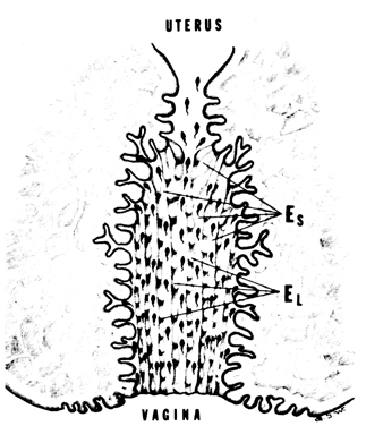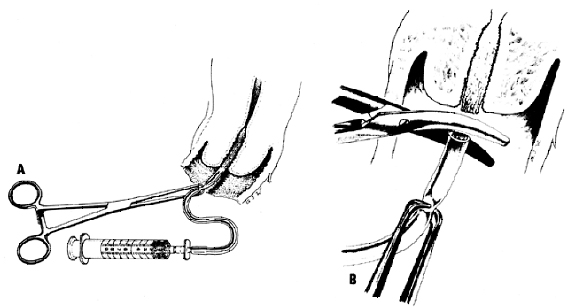Coital means everything related or connected to sexual intercourse and is derived from the Latin word “coitus” which means sexual union. Now that the coital meaning is understood let us move on to knowing more about post coital test or PCT as it is referred to. Also known as the Huhner test, PCT evaluates the interaction between sperm and cervical mucus which is essential to conceive a child.
The post-coital test is often recommended as a part of the assessment when a couple has problems in conceiving a baby. The PCT is an age-old test and is considered redundant by many doctors since many other modern tests are now available with more accurate results.
PCT is generally carried out to eliminate any cervical-related abnormalities if the female partner is unable to conceive. Doctors suggest the post coital test after it has been established through other tests that the female is ovulating well and the semen analysis of the male is normal.
As it has been demonstrated over the years that only in a very small percentage of patients are cervical causes the only causes of infertility, it is a technique that has fallen into disuse.
WHAT IS THE POSTCOITAL TEST (PCT) OR THE SIMS-HUHNER TEST?
First described by Sims in 1866 and modified thereafter by Huhner, this test involves the study of a patient’s cervical mucus after sexual intercourse without contraception. This test should be performed in the periovulatory phase, that is, close to ovulation and between 6 and 12-16 hours after sexual intercourse. This is when a sample of cervical mucus should be obtained in order to study its characteristics (volume, elasticity, consistency, the existence of any inflammatory or infectious processes) as well as the presence and quantity of motile spermatozoa.
During the postcoital test, a physical examination of the female partner using a speculum is carried out. A tiny amount of cervical mucus is then taken from the cervix and sent for testing. The pelvic examination done does not cause any kind of problems to the female. A PCT is often carried out in conjunction with a pelvic ultrasound to make sure that the test is being carried out at the time of ovulation. The cervical mucus is then carefully examined under a microscope to assess the quality of the cervical mucus along with the sperm quantity and its motility.
WHAT ARE THE RESULTS OF A PCT?
The efficient passage of spermatozoa through cervical mucus is dependent on rapid progressive motility, that is, spermatozoa with a forward progression of at least 25 μm/s. Reduced sperm motility can be a symptom of disorders related to male accessory sex gland secretion and the sequential emptying of these glands. Rapid and slow progressive motility is calculated by the speed at which sperm moves with flagellar movement in a given volume as a percentage (range 0%-100%) by counting 200 sperms.
There are 4 grades of sperm motility:
- Rapid progressive motility (ie, >25 μm/s at 37°C and >20 μm/s at 20°C; Note: 25 μm is approximately equal to 5 head lengths or half a tail length).
- Slow or sluggish progressive motility
- Nonprogressive motility (<5 μm/s)
- Immotility
A normal semen analysis must contain at least 50% grade 1 and 2, progressively motile spermatozoa. If greater than 50% sperms are immotile then the sperms should be checked for viability. Persistent poor motility is a good predictor of failure in fertilization, an outcome that is actually more important when making decisions regarding a couple's treatment options.
A positive PCT is very reassuring and implies that:
- The husband is likely to be producing enough normal sperm
- Intercourse results in semen being deposited in the vagina
- The cervical glands are healthy
- Sufficient estrogen is being produced before ovulation, suggesting that ovulation is normal
- There are no antibodies in the mucus hostile to the sperm
A negative PCT implies that:
- The PCT was not done at the best time. For example, the PCT may have been done too early or too late in the cycle. Wrong timing is the commonest reason for a negative test and can even cause repeated negative tests.
- There was no ovulation the month of the test - perhaps because of the strain or stress of making love to order.
- The sperm count was poor. Obviously, men with persistently low sperm counts, or men with poor motile sperm, may be responsible for a negative PCT.
- There may be an abnormality of the cervix - for example, chronic infection in the cervix may prevent the production of adequate mucus; and some women with a scarred cervix may not produce enough mucus
- Patients who have had surgery on the cervix ( for example, cervical conization, in which a cone of cervical tissue is removed to treat cervical dysplasia) often have this problem.
- The cervix is producing antibodies to the sperm.
- Medications such as clomiphene, tamoxifen, progesterone, and danazol - all drugs used for infertility problems - can interfere with the production of good mucus.
During the 1990s, this test was also used to determine the presence in the cervical mucus of antibodies that fight against spermatozoa, but after several studies showed that the presence of such antibodies did not in fact worsen the results of fertility treatments, this determination is no longer usually performed.
WHEN IS A POST-COITAL TEST CURRENTLY INDICATED?
For many years, a post-coital test was a fundamental part of a basic fertility examination, but nowadays its usefulness is controversial, and the world’s leading fertility groups do not routinely recommend its use. The reasons for this paradigm shift are:its lack of reproducibility, i.e., this test performed by two different people at two different times on the same couple can yield opposite results.
Its scarce concordance with the possibility of achieving pregnancy or, in other words, although the test reveals altered parameters, it has not been demonstrated that this has an influence on the couple’s chances of achieving pregnancy.
Therefore, nowadays, it would only be indicated in couples where there is no other way to obtain a semen sample for analysis, either due to personal or religious reasons.
Source:



Comments
Post a Comment